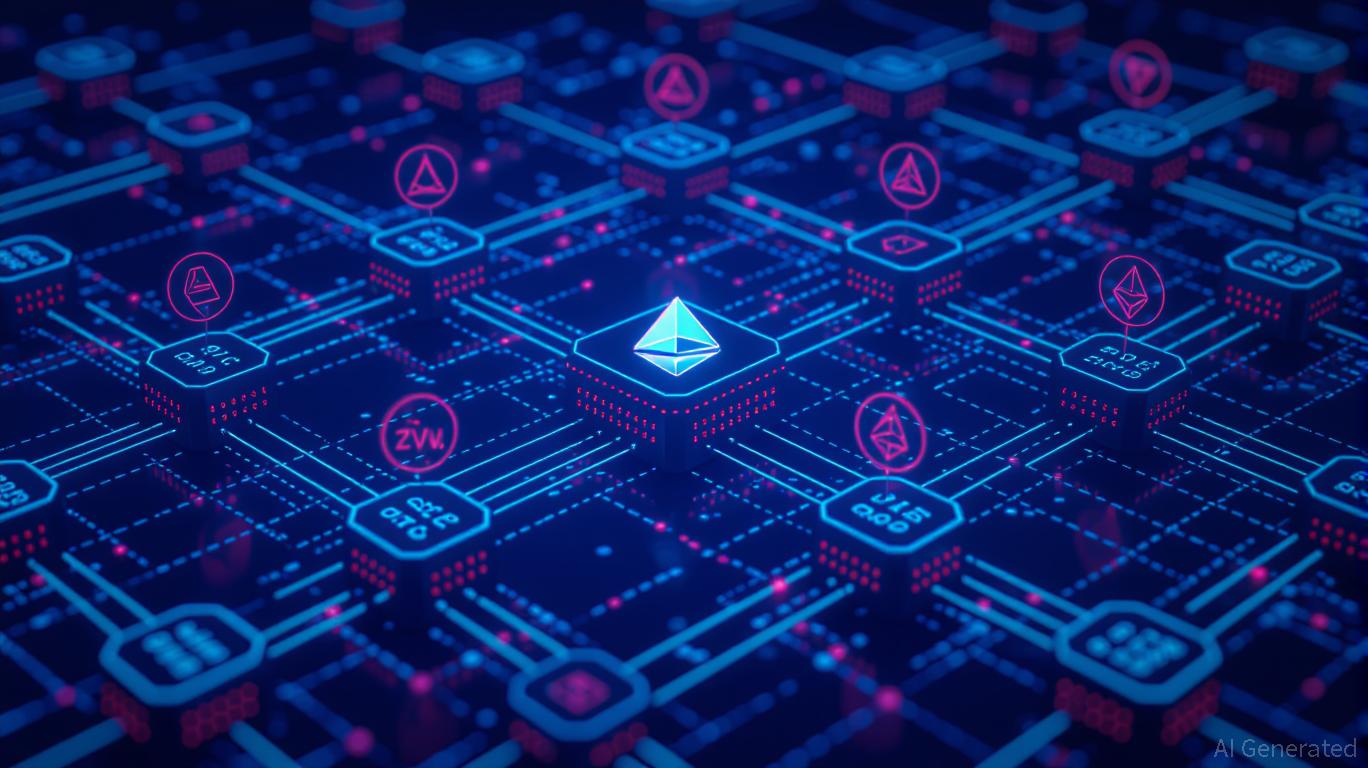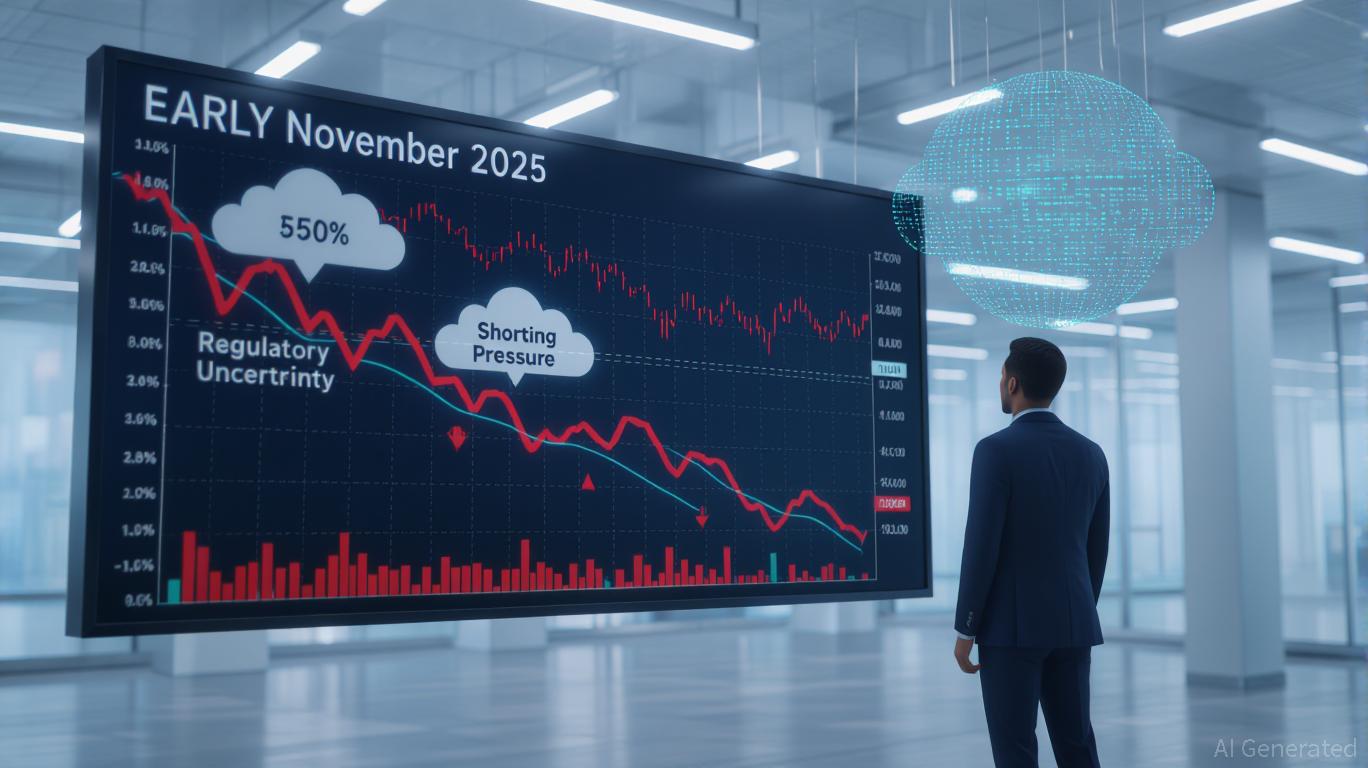ZK Atlas Enhancement: Driving Blockchain Expansion and Business Integration in 2025
- ZKsync's 2025 Atlas Upgrade introduces a high-performance ZK stack with 15,000+ TPS, redefining blockchain scalability through modular Layer 2/3 infrastructure. - The upgrade enables bridge-free Ethereum interoperability and supports EVM/RISC-V/WASM compatibility, addressing enterprise needs for hybrid blockchain solutions. - Institutional adoption surges with ZK token's 50% price jump and $19M+ partnerships, though legacy system integration and regulatory clarity remain key challenges. - BaaS compatibil
Scalability Reimagined: ZK Atlas’s Technical Innovations
Fundamentally, the ZK Atlas Upgrade represents a major reengineering of ZKsync’s system. The rollout of a high-throughput sequencer that can handle over 15,000 transactions per second (TPS) directly confronts the throughput constraints seen in traditional Layer 1 blockchains such as
The ZKsync OS further strengthens this ecosystem by providing a modular and adaptable platform. With support for multiple execution environments—including Ethereum
Enterprise Integration: Connecting Innovation with Real-World Needs
For blockchain to become widely adopted by enterprises, it must overcome two main obstacles: liquidity fragmentation and interoperability. The ZK Atlas Upgrade addresses these by enabling seamless interoperability between Layer 2 networks and Ethereum’s mainnet, removing the need for centralized bridges that have historically posed security and liquidity risks, as explained in the Zeeve blog. By allowing Layer 2 networks to access Ethereum’s vast liquidity pool, ZKsync streamlines processes for businesses aiming to tokenize real-world assets (RWAs) or conduct cross-chain transactions, as highlighted in a
Interest from institutional players has already increased. The ZK token’s 50% price jump following the upgrade signals rising trust in ZKsync’s capabilities for enterprise use, while investments such as Grvt’s $19 million funding round demonstrate the platform’s attractiveness to venture capital and corporate partners, as reported in the Bitget report. Additionally, solutions like RedStone’s Credora platform—which delivers real-time risk analytics for DeFi protocols—meet institutional requirements for transparency and regulatory compliance, as noted in the Bitget report. Together, these developments help resolve a major challenge for adoption: the absence of strong governance and risk management systems in decentralized environments.

Obstacles and Future Prospects
Even with its advancements, the ZK Atlas Upgrade does not resolve every challenge to enterprise blockchain adoption. Integrating with existing IT infrastructure remains a complicated and expensive process, especially in sectors like healthcare and manufacturing where data silos are prevalent, as discussed in a
Nevertheless, the upgrade’s modular approach and compatibility with Blockchain-as-a-Service (BaaS) platforms—using cloud services like AWS and Azure—provide a practical solution. By simplifying infrastructure management, these services allow companies to implement ZK-based applications without needing to completely overhaul their current technology, as described in the London Blockchain analysis. Moreover, the intersection of blockchain and AI is becoming increasingly important, with smart contracts automating governance for AI models and ensuring data transparency—an essential feature for industries such as finance and supply chain, as covered in the London Blockchain analysis.
Conclusion: A Strategic Investment Prospect
The ZK Atlas Upgrade stands as more than just a technical achievement; it represents a strategic shift toward a future where blockchain scalability and enterprise integration go hand in hand. By tackling issues of throughput, interoperability, and institutional trust, ZKsync has established itself as a key infrastructure provider for the next generation of decentralized technology. For investors, the upgrade’s value lies in its ability to attract enterprise users and institutional funding—a trend already visible through token price growth and new partnerships.
As blockchain technology evolves, those projects that successfully connect innovative solutions with practical, real-world applications will lead the market. The ZK Atlas Upgrade is a prime example of this philosophy, making a strong case for sustained investment in a rapidly expanding industry.
Disclaimer: The content of this article solely reflects the author's opinion and does not represent the platform in any capacity. This article is not intended to serve as a reference for making investment decisions.
You may also like
COAI's Unexpected Price Decline in Early November 2025: An Indicator of Fluctuations in the AI Industry
- Canaan Inc. (COAI) saw a sharp stock price drop in early November 2025 amid AI/crypto sector volatility driven by regulatory uncertainty and strategic shorting. - C3.ai's 54% YTD decline and exploration of a potential sale highlighted the sector's shift from speculative hype to earnings-focused scrutiny. - Gemini's poor Q3 earnings and Nano Labs' bond redemption signaled broader pessimism, amplifying COAI's 88% YTD valuation decline. - Analysts project 20% downside for AI sector valuations, emphasizing p

Dogecoin News Update: Poain Launches 'Stablecoin 2.0' Featuring AI-Powered Returns and Green Energy Infrastructure
- Poain BlockEnergy expanded its AI-powered staking platform to include USDT , offering stablecoin yield generation via smart contracts and a presale for its PEB token. - The platform uses renewable energy-powered AI algorithms to optimize staking returns, providing a low-risk alternative to traditional trading with flexible 2-10 day plans. - Users can withdraw or reinvest profits in multiple assets, while PEB’s presale roadmap projects a 300x price increase from $0.007 to $2.50, pending adoption and regul

Sonic Labs shifts focus to growth rooted in core principles, relying on deflationary tokenomics to ensure lasting value
- Sonic Labs (formerly Fantom) under CEO Mitchell Demeter shifts focus to fundamentals-driven growth, prioritizing deflationary tokenomics and ecosystem expansion over speed-centric hype. - New fee monetization model allocates 15-90% of fees to builders, 10% to validators, and burns remaining fees to reduce S token supply, aiming to strengthen token value and ecosystem sustainability. - Platform plans U.S. expansion via New York office, GMSonic educational hub, and Ethereum/Solana-compatible improvements t

Fed Faces Dilemma: Balancing Inflation Management and a Slowing Labor Market in December Choice
- The U.S. Federal Reserve is likely to cut rates by 25 basis points in December, marking the third consecutive reduction to a 3.50%-3.75% range. - Internal FOMC divisions and government shutdown-related data gaps complicate the decision, with labor market softness and persistent inflation above 2% key concerns. - Market expectations for a December cut have dropped to 63% as investors weigh labor resilience against inflation risks from tariffs and supply disruptions. - Divergent FOMC views persist, with so